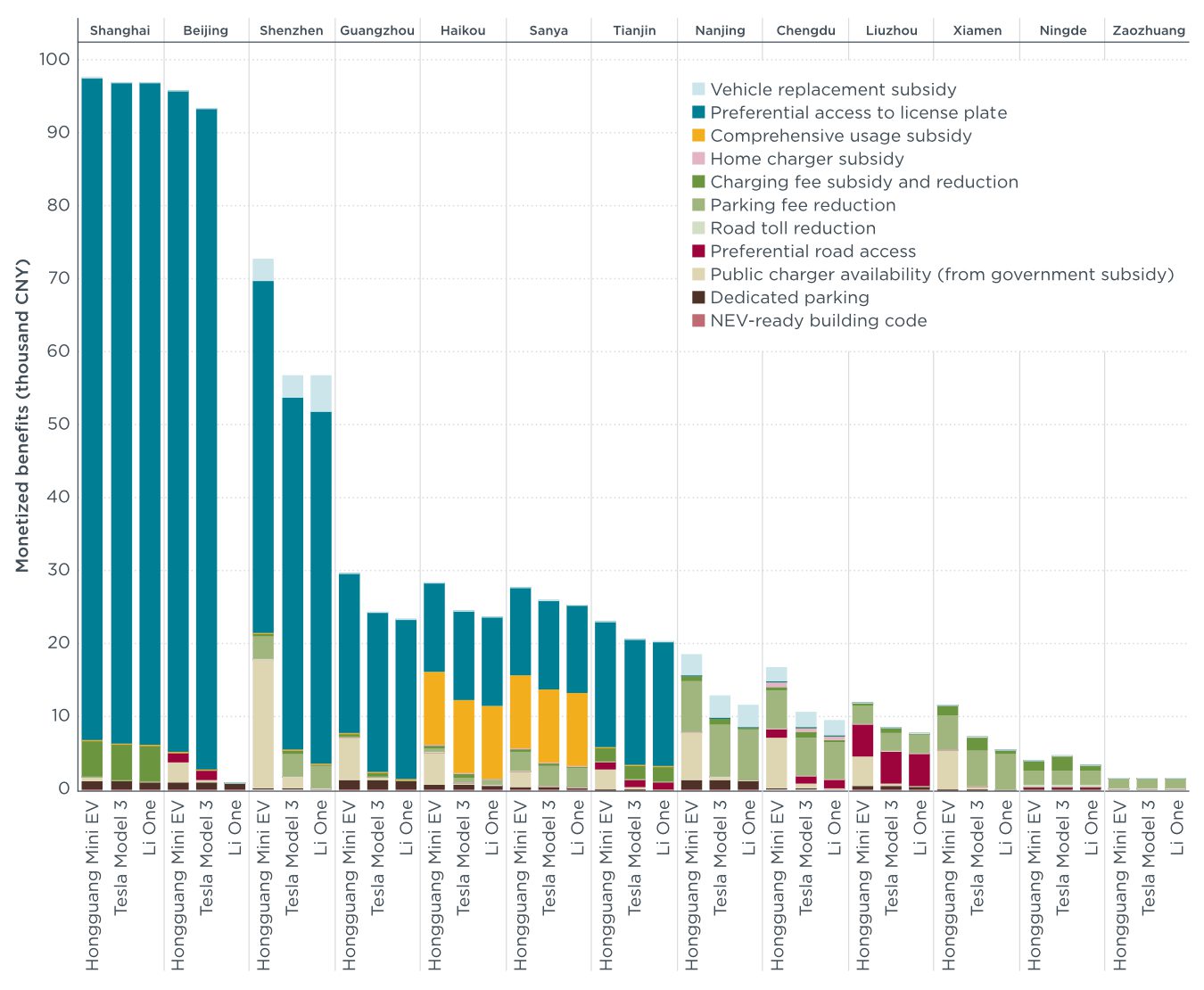Assessment of leading new energy vehicle city markets in China and policy lessons
Report
Accelerating new energy vehicle uptake in Chinese cities: Assessment of policies for private passenger cars in leading city markets
ICCT previously studied city-level policies promoting new energy passenger cars (NEPCs) in China in 2015 and this report is an update that focuses on policies in place in 2020. In addition to quantitatively evaluating the benefits that city-level policies bring to an individual private consumer, the authors consider the policy drivers’ impact on market performance and, where relevant, include updates regarding central government policies.
Different from 2015, the analysis finds that purchase subsidy was no longer the main incentive in 2020. This was certainly influenced by central government guidance to shift away from purchase subsidies and toward use-phase incentives. As shown in the figure below, preferential access to vehicle license plates provided the most consumer benefit in 2020 in those cities that had a limit on the annual number of license plates for conventional fuel vehicles. Use-phase incentives such as parking fee reduction and government support for public charger availability also brought substantial benefits. Notably, cities continued to improve public charging infrastructure availability while actively addressing different challenges and needs, including infrastructure for existing multi-unit dwellings. Going forward, the authors suggest that cities set specific and actionable targets and design matching policies to achieve them, as this would help to facilitate better implementation.

Figure. Monetized private consumer benefits from city incentives for the three selected models in 2020.
